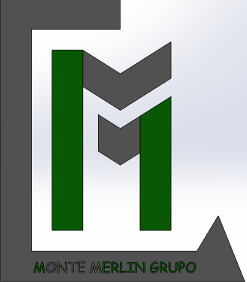Understanding the subtle frameworks behind our decisions is crucial to comprehending how societal preferences and trends evolve over time. Choice structures—defined as the organized options, framing, and contextual cues—act as invisible architects of behavior. They determine not only what we choose but how we perceive value, risk, and novelty. Deep beneath surface-level decisions lies a complex interplay of cognitive heuristics, environmental signals, and social cues—each reinforcing patterns that shape collective trends. By examining how these structures function, we uncover the hidden logic behind shifting consumer behaviors and cultural norms.
The Psychology of Default Pathways: Why Inertia Drives Preference
Default options wield extraordinary influence because they reduce cognitive effort—a phenomenon known as status quo bias. When presented with a menu, a subscription, or a policy, most individuals opt for the pre-selected choice, not out of approval, but due to the mental cost of evaluating alternatives. This inertia is rooted in loss aversion: the pain of losing what’s familiar outweighs the potential gain of a new option. For example, automatic enrollment in retirement savings plans significantly boosts participation rates, proving that subtle defaults reshape long-term behavior. Choice architecture leverages this by positioning preferred options as the path of least resistance, thereby steering trends without overt persuasion.
Framing Effects in Seemingly Neutral Choices
The way a choice is presented—its framing—profoundly alters perception and decision. Identical outcomes framed as gains versus losses trigger different emotional responses and behavioral outcomes. For instance, a product labeled “90% fat-free” feels healthier than one described as “10% fat,” even though both convey the same information. This cognitive bias, demonstrated in countless studies, reveals how language and context act as silent architects of preference. In marketing, framing choices through scarcity (“limited time offer”) or social proof (“most popular choice”) amplifies desirability. These framing strategies exploit mental shortcuts, embedding subtle cues that align choices with emerging trends.
How Environmental Cues Subtly Redirect Decision-Making
Our surroundings constantly emit cues that guide decisions without conscious awareness. The placement of products in stores, ambient lighting, scent diffusion, and even background music all serve as environmental triggers that shape preferences. Supermarkets position high-margin items at eye level or near checkout lines not just for visibility, but to exploit impulse-driven choices. Studies show that ambient scents—like the smell of fresh bread—can increase impulse purchases by over 30%. These cues form a silent narrative that aligns individual behavior with broader cultural patterns, reinforcing trends through repeated exposure and sensory reinforcement.
The Role of Cognitive Load in Shaping Daily Decisions
Decision-making is heavily constrained by mental energy. When cognitive load is high—due to stress, fatigue, or information overload—people default to heuristic shortcuts and rely more on defaults and framing. For example, overwhelmed consumers often choose the first option they see rather than evaluating alternatives thoroughly. This explains why simplifying choice structures—through minimalist design, clear labeling, or guided pathways—dramatically improves decision quality and satisfaction. In high-stakes environments like healthcare or finance, reducing cognitive friction prevents errors and fosters adaptive behavior, reinforcing sustainable preference patterns.
The Hidden Influence of Social Norms on Individual Choices
Humans are inherently social creatures, and our choices are deeply shaped by perceived norms. When individuals observe others adopting a behavior—whether wearing sustainable fashion, using eco-friendly products, or embracing digital minimalism—they are more likely to conform, even without explicit pressure. This normative influence operates through subtle cues like peer endorsements, social media trends, and visible adoption metrics. Research shows that social proof can increase adoption rates by up to 40% in new product launches. Choice architectures that highlight widespread acceptance create powerful momentum, accelerating the spread of emerging trends through collective behavior.
Temporal Dynamics: How Timing Alters Preference Patterns
Preferences are not static—they evolve with time, context, and life stages. Choice structures must account for temporal shifts: what appeals in youth may lose relevance in later years, and vice versa. For instance, young professionals prioritize convenience and novelty, while older adults value reliability and long-term value. Marketers and policymakers increasingly use time-based segmentation to align offerings with phase-specific needs. Seasonal promotions, lifecycle-based personalization, and adaptive interfaces reflect this dynamic, demonstrating that effective choice architecture anticipates not just current but future preferences.
Extending the Bridge: From Structural Design to Behavioral Outcomes
Choice structures do not merely reflect preferences—they actively shape them. By strategically organizing defaults, framing options, embedding environmental cues, reducing cognitive load, leveraging social norms, and adapting over time, these architectures guide behavior at both individual and societal levels. The parent article’s theme—how choice structures mold preferences and trends—finds its power in this causal chain: subtle design elements initiate cascading behavioral shifts that redefine cultural norms. Each element in the structure functions as a lever, fine-tuned to influence decisions in predictable yet powerful ways.
Understanding how choice structures shape preferences and trends reveals a deeper truth: small, deliberate design choices can drive large-scale behavioral evolution. From everyday purchases to societal movements, the frameworks we create quietly guide what people value, adopt, and sustain. The next step is recognizing these levers in our environment—and using them wisely.


Leave a Comment